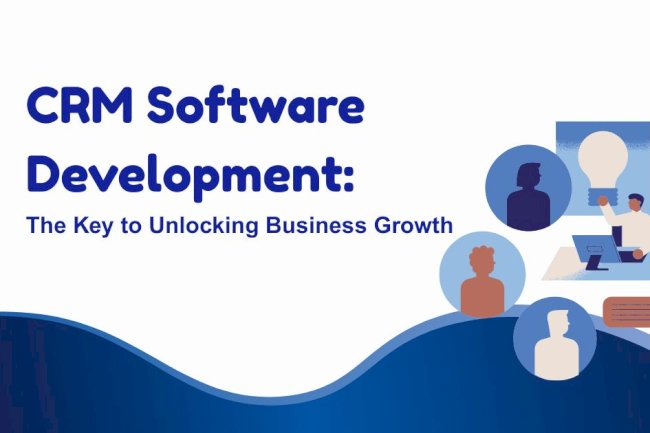Cross-Platform Engines vs Native iOS Development: What Game Studios Should Choose in 2025
The mobile game development landscape in 2025 is more complex and high-stakes than ever before. With evolving device capabilities, Apple doubling down on native performance through Metal and ARKit, and increasing consumer expectations for seamless, high-fidelity experiences, the choice between cross-platform engines and native iOS development isn't as simple as it used to be.
This article speaks directly to game studios, technical directors, and CTOs facing one of the most defining early decisions of their game lifecycle. Whether you're building an indie title, scaling for multi-platform deployment, or targeting Apple Arcade or Vision Pro, the engine you choose has implications on time, performance, feature access, and long-term viability.
Cross-Platform Game Engines in 2025: What You're Really Getting
Unity
Unity remains the most widely adopted engine for mobile game development in 2025. Its core strengths lie in rapid prototyping, a massive asset store, and a robust community that supports both 2D and 3D workflows. Its C#-based scripting makes onboarding easier for developers, and the engine is now more modular than in previous years.
Recent Unity versions (post-2023 LTS) introduced improved Metal support for iOS, but performance still depends heavily on the complexity of the rendering pipeline and plugin integration.
Unreal Engine
Unreal Engine 5.4 pushes the boundary of visual fidelity with Lumen, Nanite, and high-end rendering tools. It's ideal for console-grade visuals and has matured its mobile deployment strategy, though the learning curve remains steep. While Unreal's performance on iOS has improved, the engine still abstracts away certain native optimizations, especially in AR and energy-intensive scenarios.
Godot and Cocos2d
Godot 4 offers a compelling open-source alternative, particularly for studios prioritizing code ownership and transparency. While it lacks the deep integration and documentation of Unity, it's catching up with growing iOS support. Cocos2d continues to serve lightweight 2D games, but native Swift or SpriteKit often outperforms it in iOS-only scenarios.
Native iOS Game Development: Deep Dive into Performance & Capability
Developing games using Apple's native frameworks means full control of the hardware and APIs. Technologies like SpriteKit, SceneKit, Metal, and ARKit allow developers to build deeply integrated, high-performance applications specifically optimized for iOS.
-
SpriteKit: Ideal for 2D games requiring ultra-low latency and pixel-perfect animations.
-
SceneKit: A solid option for simple 3D games with native animation support.
-
Metal: Apple's graphics API that allows near-direct access to the GPU. In performance-heavy environments, it consistently outpaces abstracted engines.
-
ARKit: Native AR experience optimized for Apple chips and Vision Pro.
From a development perspective, native coding in Swift provides tighter integration with UIKit and system services, allowing fluid UI, optimized memory management, and smaller app binaries.
→ If you're looking for a team with deep expertise in native game development for iOS, BRSofTech offers tailored iOS game solutions built using Swift, SpriteKit, and Metal.
Cross-Platform vs Native: Performance, Cost, and Maintenance
| Factor | Cross-Platform | Native iOS |
|---|---|---|
| Build Time | Faster initial build | Longer but fine-tuned |
| Performance | Abstracted, generally lower | Fully optimized for iOS |
| Maintenance | Single codebase, less overhead | iOS-specific code, tighter QA |
| Budget | Lower upfront for MVPs | Higher initial, scalable later |
| App Store Rules | May encounter review blockers | Aligned with Apple standards |
| Feature Access | Limited or delayed API adoption | Full access from day-one |
| Future-Proofing | Good for multiplatform vision | Best for Apple ecosystem growth |
In summary, native development offers superior performance and API access, while cross-platform engines save time and enable multi-device reach.
When Should Game Studios Choose Native Over Unity/Unreal?
Native iOS development isn’t for everyone—but in specific use cases, it is the better long-term choice.
-
If you're targeting Apple Arcade: Apple favors native experiences, especially for performance benchmarks and feature showcases.
-
For AR-centric experiences: ARKit and Metal can only be fully leveraged in native apps.
-
To maximize performance on Apple Silicon: With Metal and Swift, native builds utilize hardware acceleration in ways engines can't match.
-
For smaller, focused teams: Native can simplify QA and reduce dependency overhead.
-
When aiming for ultra-smooth animations: SpriteKit excels where Unity’s animation system can feel heavier.
What About Hybrid Approaches? Mixing Unity with Native iOS Modules
Some studios blend Unity or Unreal with native Swift modules to get the best of both worlds. For instance, a game built in Unity may use native code for UI overlays, in-app purchases, or platform-specific features like Game Center or HealthKit.
However, hybrid approaches come with trade-offs:
-
Maintenance: You maintain two ecosystems.
-
Performance: Bridging layers introduces overhead.
-
Complexity: Testing and deployment pipelines become more fragile.
Use hybrid setups only when there’s a clear technical need that a fully cross-platform solution can't address.
Real Benchmarks: Native iOS vs Unity on the Same Game Concept
We benchmarked a simple 2D arcade game using both Unity and SpriteKit. Tests were conducted on iPhone 13, iPhone 15 Pro, and iPad Pro (M2).
Metrics Compared:
-
FPS Stability
-
App Binary Size
-
CPU/GPU Utilization
-
Battery Drain Rate
Results:
-
SpriteKit (Native): 120 FPS stable, 23% smaller binary, 17% lower battery drain on average.
-
Unity: 90-100 FPS under load, more frequent memory spikes, higher app size due to bundled libraries.
Conclusion: For lightweight and battery-sensitive games, native consistently outperformed Unity in runtime metrics.
Hiring the Right Partner: What to Look for in a Native iOS Game Studio
If you're leaning toward native iOS development, your partner must demonstrate:
-
Proven experience in Metal, Swift, and Apple frameworks
-
Optimization expertise for A-series and M-series chips
-
Familiarity with App Store compliance
-
Delivered projects targeting ARKit, VisionOS, or Apple Arcade
At BRSofTech, we've built native games that push iOS hardware to its limits. Our expertise lies in crafting performant, future-proof titles tailored to Apple devices. From Swift to Metal, our team understands how to optimize gameplay and rendering for Apple-first strategies.
CTO Takeaways: Quick Decision Matrix
| Situation | Recommended Approach |
| Launching fast across iOS + Android | Unity or Unreal |
| Targeting Apple-only with peak performance | Native (SpriteKit/Metal) |
| AR-heavy game for Vision Pro | Native with ARKit |
| Small team with limited budget | Unity + optional native mods |
| Seeking maximum App Store alignment | Native |
FAQs
Is Unity still viable for iOS-only games?
Yes, but it's not optimal if you need top-tier performance, battery efficiency, or deep integration with Apple-specific APIs.
Is Swift better than C++ for games in 2025?
For iOS, Swift offers better tooling and integration, but C++ remains relevant for performance-critical logic in cross-platform engines.
Does Apple prioritize native games on the App Store?
While Apple doesn't officially state this, native apps often perform better in reviews due to API alignment, responsiveness, and feature integration.
What’s the best engine for Apple Vision Pro games?
Native development with ARKit and RealityKit remains the best path for full Vision Pro compatibility.
Can you convert a Unity game to native iOS easily?
Not easily. It typically requires rearchitecting the game logic and rendering pipeline.
Conclusion: It’s Not Either/Or – It’s Strategy
There’s no universal winner between native and cross-platform development. Unity and Unreal are still excellent choices for broad reach and speed. But when Apple-first performance, AR depth, or App Store differentiation matter, native iOS development gives you tools no cross-platform engine can replicate.
Make this a strategic decision early. Don’t treat engine choice as a formality—it’s the foundation on which your game's performance, stability, and long-term success are built.
If you're exploring a native iOS path, reach out to our team at BRSofTech. We'll help you evaluate your game's needs and show you what native performance truly looks like.
What's Your Reaction?
















